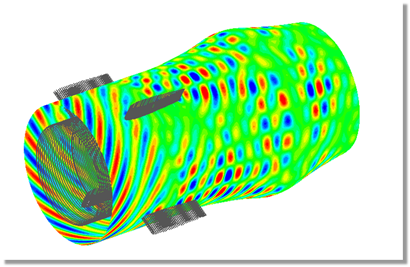A suite of high-order, time-domain computational aeroacoustic programs have been developed to model sound propagation and radiation from airframe components and aero engine intake and bypass/exhaust ducts. The method is based on multi-block, structured grids and high-order compact schemes [1-3] and is capable of modelling the effect of liner, bifurcation, etc. [3-5]. Simulations have been performed of noise propagation/radiation problems associated with high lift devices (HLDs), e.g. slats, flaps, spoilers, and both engine intake and bypass ducts. New features are being implemented including efficient computation of broadband noise content for engine applications. New formulations of linearised Euler and acoustic perturbation equations are also being developed.
Aircraft noise is an important environment concern. Noise generated by HLDs and engines contributes to the overall noise of an aircraft during take-off and landing. Efficient computation of sound propagation and radiation from HLDs and aero engines is an important area of aircraft noise study. Computational aeroacoustics is concerned with sound generation by fluid flow, sound propagation and radiation to the farfield. At Southampton, work has been undertaken to develop robust and efficient codes for aircraft noise problems.

Figure 1: Computation of intake sound radiation with liner.

Figure 2: Calculation of effect of bifurcations in bypass ducts
Efficient and robust programs have been developed at Southampton for aircraft noise problems. The programs have been applied to noise generation and propagation problems associated with HLDs, landing gears, and engines